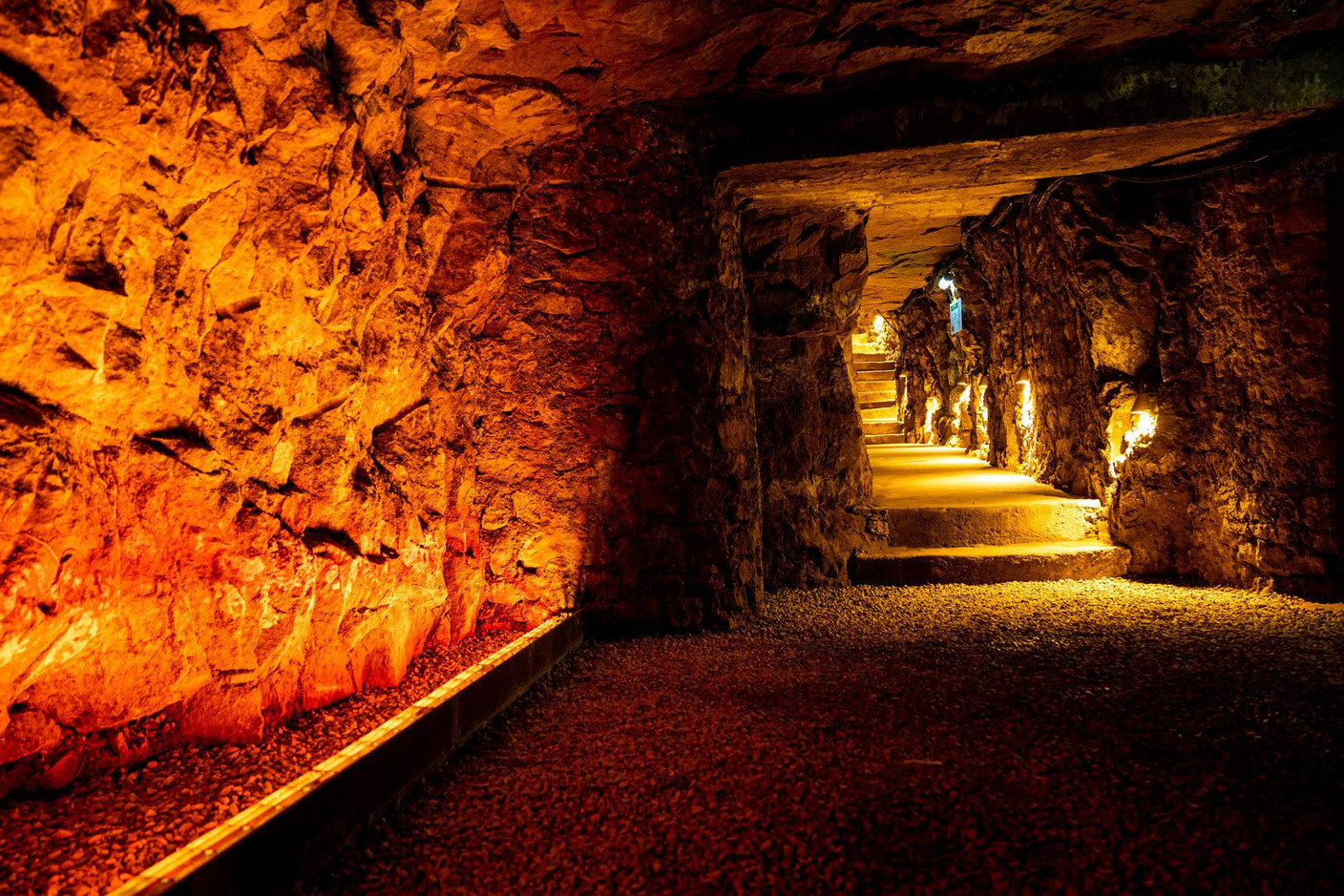One of Luxembourg City's star attractions is the Casemates. In addition to the Bock Casemates, which are well known and the most visited (more than 190,000 visitors in 2024), there is another network, the Casemates de la Pétrusse, which are both accessible with a guide and as self-guided tours. To facilitate ticket sales, a new pavilion has been installed on the Place de la Constitution. This marks the end of five years of intensive restoration and safety work (2017-2022), which has preserved the historic structures while offering a modern and comfortable visitor experience.
The new pavilion is both a ticket office and a technical and safety centre for the Casemates de la Pétrusse tour. From his post, the agent on duty has access to the video surveillance cameras, emergency calls from terminals dotted around the circuit and the fire protection system. This is also where the electrical cabinet that powers the circuit is installed. This centralised installation, for both technical and surveillance purposes, means that only one ambulatory security guard is needed in the casemates, "which also saves money", stated , chairman of the LCTO.
A historic tour highlighted
The Casemates de la Pétrusse are a complex defence system built into the city's fortifications. "Luxembourg has the largest fortification network in Northern Europe," explained the guide who accompanies us on a recent tour. They were built at different times, between the 17th and 18th centuries, under Spanish, Prussian, Austrian and French rule. These protected corridors, built primarily for military reasons to defend the town, for the movement of garrisons, cannon and artillery fire, were also used during the years of peace for crossbow training by the Schéiss society, mushroom cultivation, the storage of Mercier champagne bottles and even as party venues. During the Second World War, the casemates were also used as air raid shelters. Since 1994, the fortifications of Luxembourg City and its old quarters have been listed as a Unesco World Heritage Site.
Today, these long corridors of stone, totalling some 17km in length, have become a tourist attraction. Unlike the Casemates du Bock, the Casemates de la Pétrusse can be visited freely. Tido Brussig Szenerien, a German artist, has designed a tour of the site, complete with light effects and video projection. Along the way, there are educational stations that provide historical landmarks and information about the surrounding area.
The corridors run under the Gëlle Fra and along the Pétrusse. In some places, there are loopholes or baffles designed to injure enemy soldiers. Some of the larger rooms were dug out for cannon fire, and a vestige of this is still on display. At a bend in the road, we come across some old toilets, because "you have to have a few conveniences", said the guide, who pointed out the inscription "Den Sand nicht vergessen" ("Don't forget the sand"), the historic replacement for the toilet flush.
At the end of the route, you emerge into the Parc de la Pétrusse, and after descending a number of stairs, it's now time to climb them again. It's a dive into history that's well worth your time and effort.
Read the French-language version of this report /






